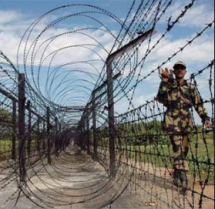Ideas into movement
Boost TNI's work
50 years. Hundreds of social struggles. Countless ideas turned into movement.
Support us as we celebrate our 50th anniversary in 2024.

Northeast India's strategic location between India, China and southeast Asia has led to a recent boom in resource extraction and investment by multinational corporations, but the world continues to remain largely silent on the human rights abuses that continue to be perpetrated by the Indian military.

Nestled in the foothills of the Himalayas, and because of the mountain range, NEI is the physical gateway between India, China and Southeast Asia. Strategically important to both countries, China also claims the Indian State of Arunachal Pradesh as part of South Tibet. Despite a build-up of troops on both sides of the disputed border, it has been suggested that the opening of this passage is inevitable, and that when it happens it will be comparable in geopolitical and economic terms to the opening of the Suez Canal. Others maintain that this is currently a remote prospect because of the tensions within and between India, China and Burma, but few dispute the growing geopolitical stature of the region.
The region is also crucial in environmental terms. Two of the world’s 34 official ‘biodiversity hotspots’ traverse parts of NEI, fed by the rivers of the mighty Brahmaputra which flows down from the Tibetan plateau through the fertile plains of Northeast India en route to the Bay of Bengal via Bangladesh, accounting for more than one third of India’s total water resources. A massive hydro-electric power programme is underway and growing exploration of NEI’s generous reserves of oil, gas and minerals are adding a new dimension to the struggles for autonomy and self-determination that have dominated the post-independence history of the region.
The Indian government sought first to defeat and then to contain movements for self-determination in NEI with military force. Like Jammu and Kashmir, NEI is both highly militarised and under-developed because of this strategy. The presence of armed groups and the ongoing counter-insurgency operations has a tremendous impact on every-day life and the multi-ethnic dimension to the conflict in NEI often spills over into community relations. In designated ‘disturbed areas’ the armed forces enjoy exceptional powers such as shoot-to-kill, warrantless search, seizure and arrest, and immunity from prosecution for their actions. This has caused deep resentment among the region’s populations.
Today the people of NEI face many challenges. Fifty years of conflict has led to a strong military presence and engendered a culture of violence. Prolonged underdevelopment and the forces of modernisation and globalisation have opened the region to resource extraction, multinational corporations and the channels of international trade. The international community regularly lauds India as the ‘world’s largest democracy’ but remains largely silent about human rights abuses within India’s borders. The situation in Jammu and Kashmir is on the radar, if not the agenda, of India’s major trading and security partners, but comparatively little is known about the Northeast. This report introduces some of the key human rights issues in the region.
Pages: 32